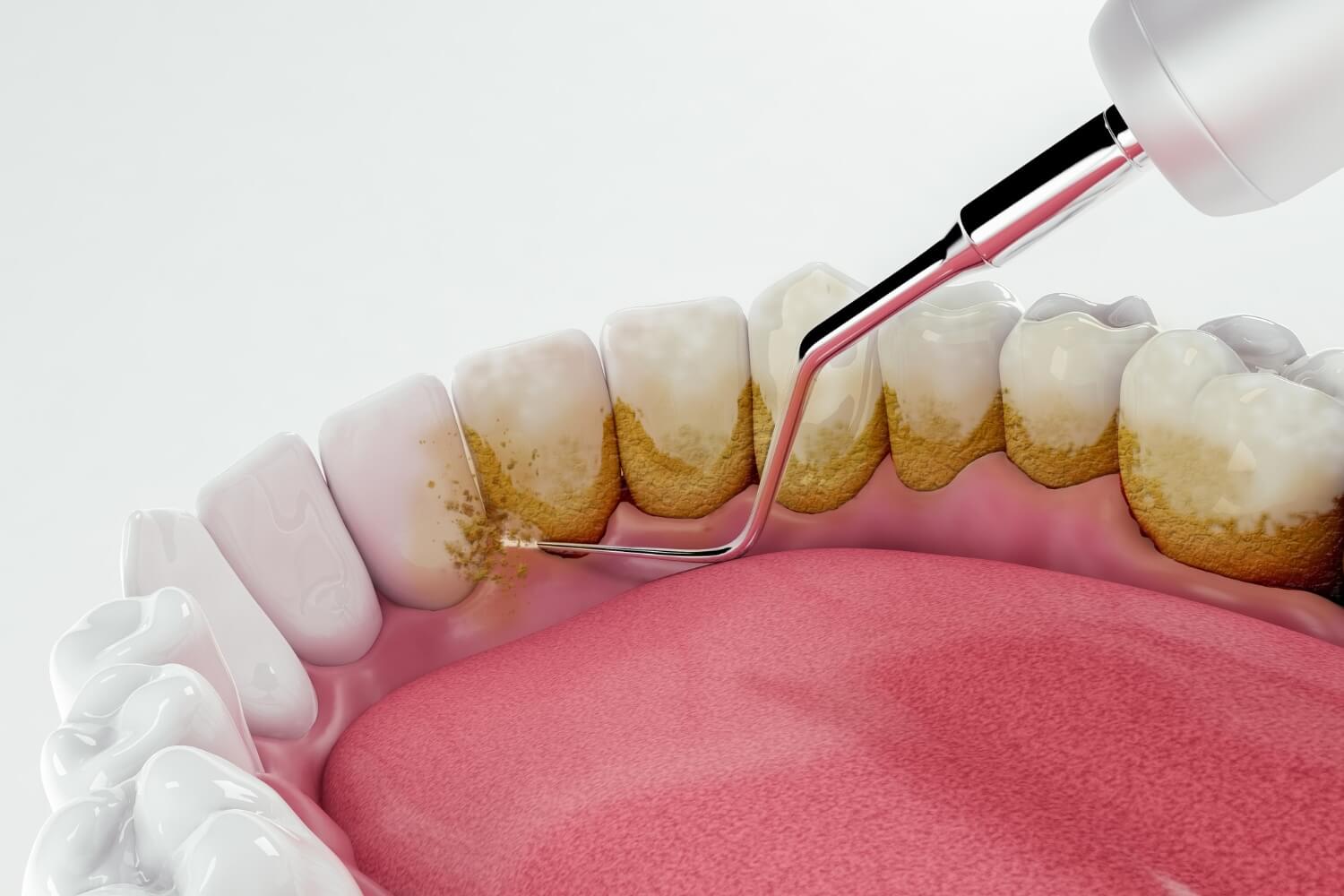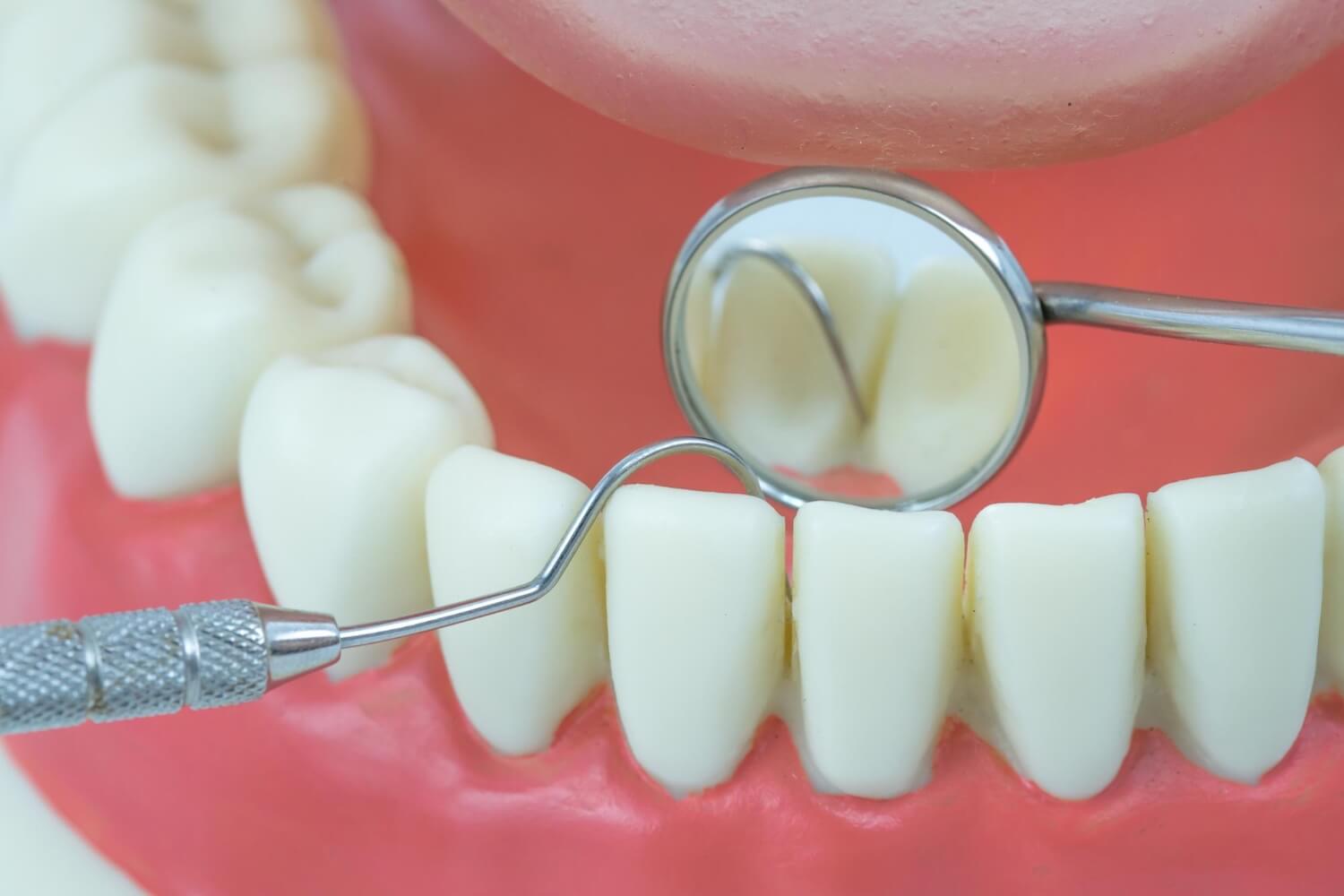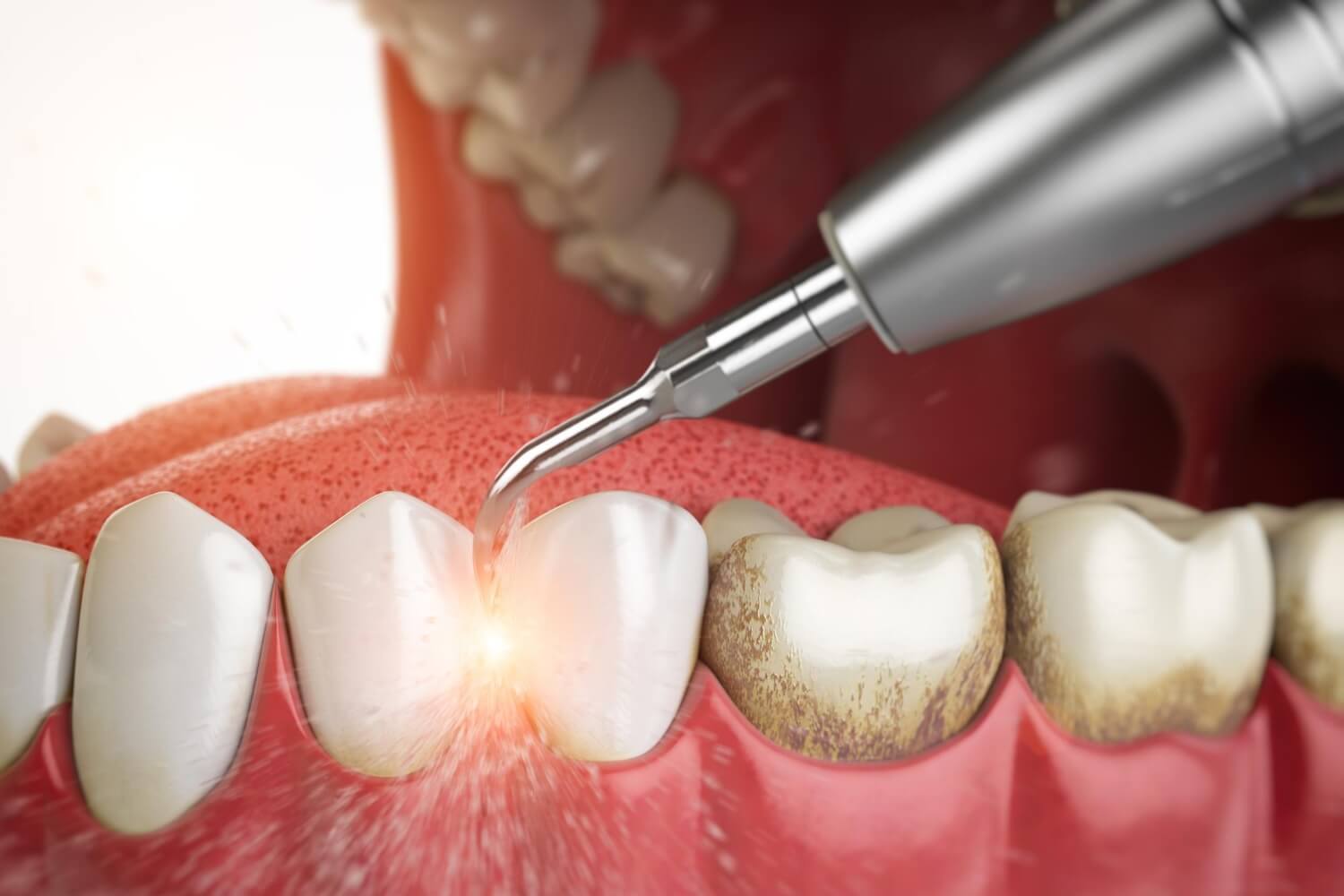What is dental calculus and how does it form?
Dental calculus (calculus) is hardened dental plaque that adheres to tooth surfaces and cannot be removed at home. If soft plaque isn’t thoroughly cleared with brushing and flossing, minerals from saliva (e.g., calcium, phosphate) crystallise within it, turning the layer into hard calculus that bonds firmly to teeth.
Factors that speed up calculus build-up:
- Genetics (more mineral-rich saliva)
- Smoking
- Reduced salivary flow (medications/conditions)
- Crowded teeth or leaky restorations (hard-to-clean areas)
Calculus most often appears on the tongue-side of lower incisors and cheek-side of upper molars, near major salivary ducts.
Important: dental calculus is not just cosmetic. Its rough surface harbours bacteria that drive inflammation. Only professional scaling can remove it safely.
Why dental calculus is risky
- Staining & discoloration: porous calculus traps pigments from coffee, tea, red wine, and colourful spices.
- Gum disease & tooth loss: subgingival (under-the-gum) calculus triggers inflammation, periodontal pockets, bone loss, mobility, and eventual tooth loss.
- Pocket formation: as the gum detaches, a “pocket” forms that you can’t clean at home, sustaining infection and bone resorption.
- Bad breath (halitosis): bacterial by-products within calculus cause persistent odour.
- Risk to restorations: calculus forms on crowns, bridges, and dentures as well.
Types of dental calculus
- Supragingival calculus: above the gumline; yellow-brown; efficiently removed with ultrasonic scaling.
- Subgingival calculus: below the gumline on root surfaces; often invisible; may require root debridement/curettage.
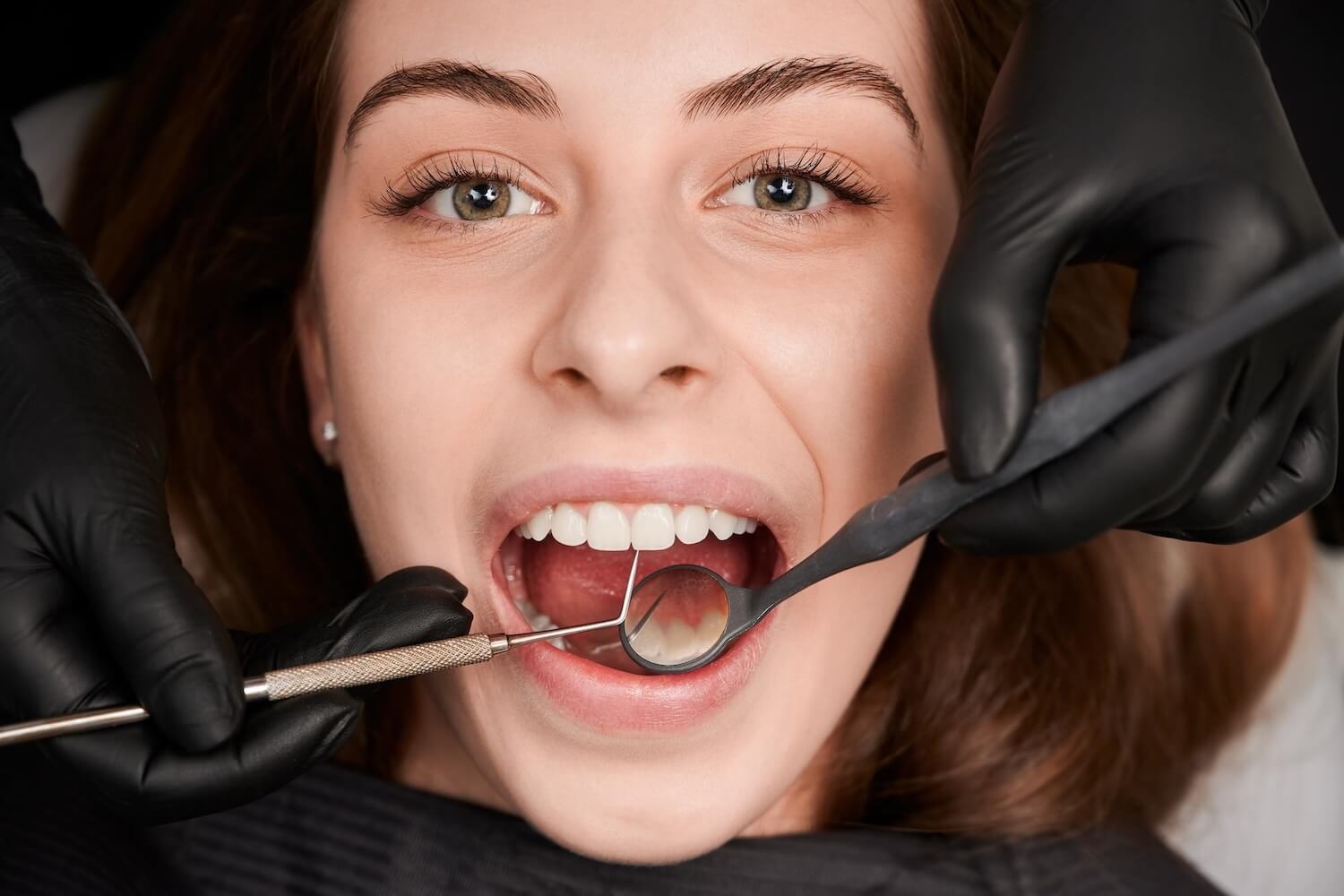
How professional removal works
1. Assessment & consultation
The treatment begins with a comprehensive examination to evaluate the condition of your teeth and gums. As part of this, we assess the amount and location of dental calculus—both above (supragingival) and below (subgingival) the gumline—and check for any signs of inflammation. Based on the severity, we recommend the necessary interventions.
2. Ultrasonic scaling
The primary tool for removing dental calculus is the ultrasonic scaler, which quickly and efficiently breaks up mineralised deposits. High-frequency vibrations loosen hardened calculus, while a cooling water spray flushes away debris and protects the teeth and gums from heat.
3. Hand instrumentation (as needed)
After ultrasonic cleaning, we use precision hand scalers and curettes to remove any deposits the ultrasonic tip cannot reach—especially below the gumline. This ensures thorough debridement and helps prevent subgingival/periodontal inflammation.
4. Polishing / air-polishing
After calculus removal, tooth surfaces can remain slightly rough, which encourages rapid plaque re-accumulation. During polishing, we smooth the enamel with a specially formulated prophy paste applied via a rotating brush or rubber cup, leaving the teeth smooth and glossy. This not only enhances aesthetics but also reduces bacterial adherence and plaque retention.
5. Topical fluoride (optional)
After polishing, we often apply a fluoride gel or solution to remineralise and strengthen enamel, help prevent caries, and reduce any transient post-treatment sensitivity.
6. Home-care guide
At the end of your visit, we provide tailored advice to help you maintain optimal oral hygiene. This includes reviewing toothbrushing technique (e.g., gentle, angled strokes along the gumline), recommending the right toothbrush and fluoride toothpaste, and introducing interdental cleaning (floss or interdental brushes) as part of your daily routine.
Aftercare Following Professional Scaling
- Avoid staining foods & drinks (first 24 hours): Because freshly cleaned enamel is smoother, it can take up pigments more readily. Skip coffee, tea, red wine, beetroot, and other strongly coloured foods/drinks for at least 24 hours.
- Limit acidic items (for 1–2 days): Citrus fruits, fizzy drinks, and other acids may irritate temporarily sensitive teeth and gums.
- Skip extremes of temperature (for a few hours): Very hot or very cold foods/drinks can trigger short-lived sensitivity right after treatment.
- Do not smoke: Smoking can re-stain freshly cleaned teeth and slows gum healing. Aim to avoid it for 24–48 hours—longer is even better.
- Prioritise gentle oral hygiene: Use a soft-bristled toothbrush and a gentle technique along the gumline. Don’t skip floss or interdental brushes.
- Use a desensitising toothpaste (if needed): If you notice transient sensitivity, a toothpaste formulated for sensitive teeth can help reduce symptoms.
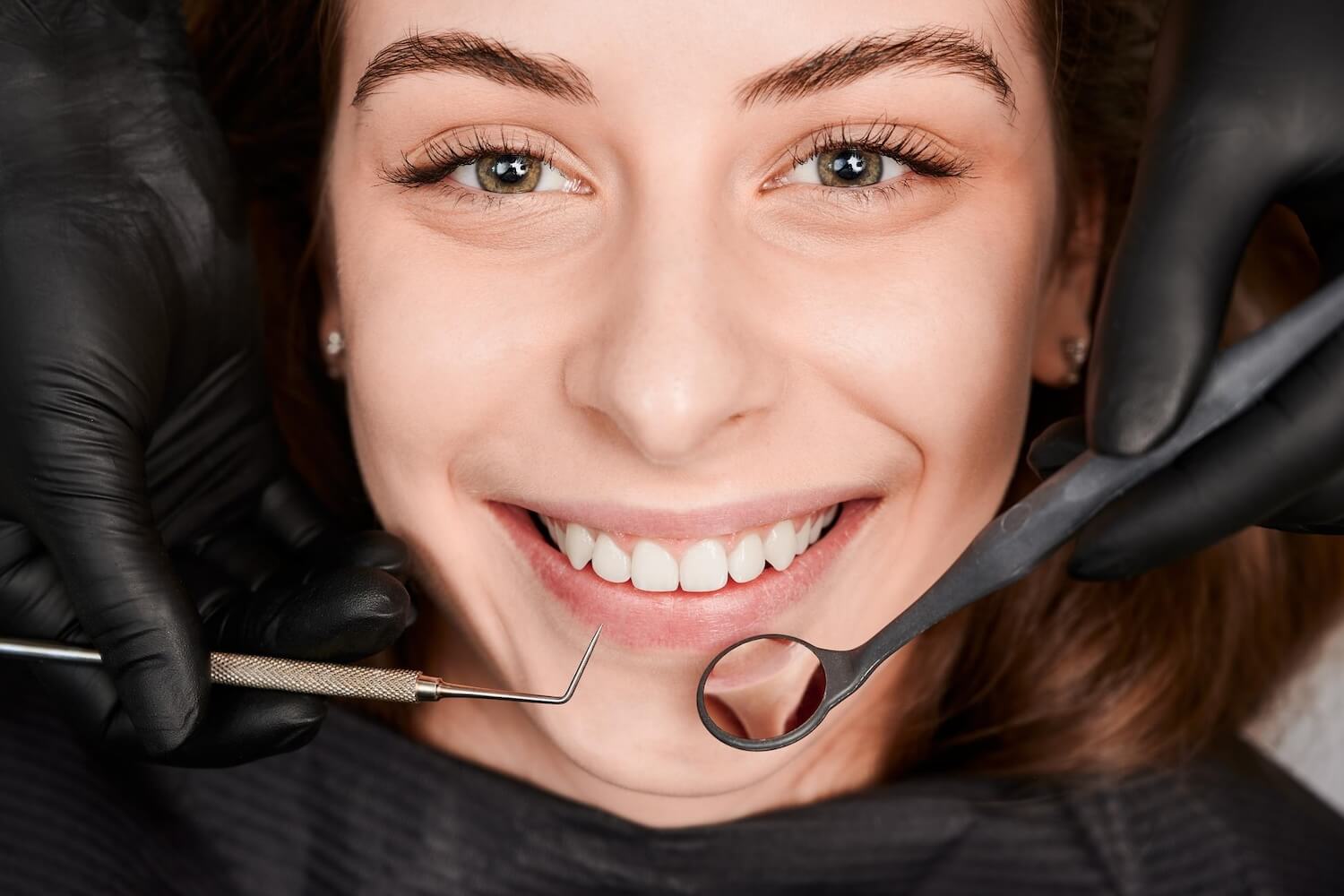
FAQs
Is ultrasonic scaling painful?
Generally comfortable; temporarily sensitive gums/roots may feel mild discomfort.
How often should I have calculus removed?
Typically every 6 months; more often if you build calculus quickly or have periodontal risk.
Can I remove calculus at home?
No—calculus is mineralised and requires professional instruments; DIY attempts can harm enamel and gums.
How long does it take?
Usually 30–60 minutes, depending on deposits and need for subgingival debridement.
Book an Appointment
Seeing visible dental calculus or bleeding when brushing? Don’t ignore it—these are early signs of gum disease. Combine your 6-month check-up with professional scaling; it takes about half an hour and protects your teeth and gums long-term. Schedule your visit today.
